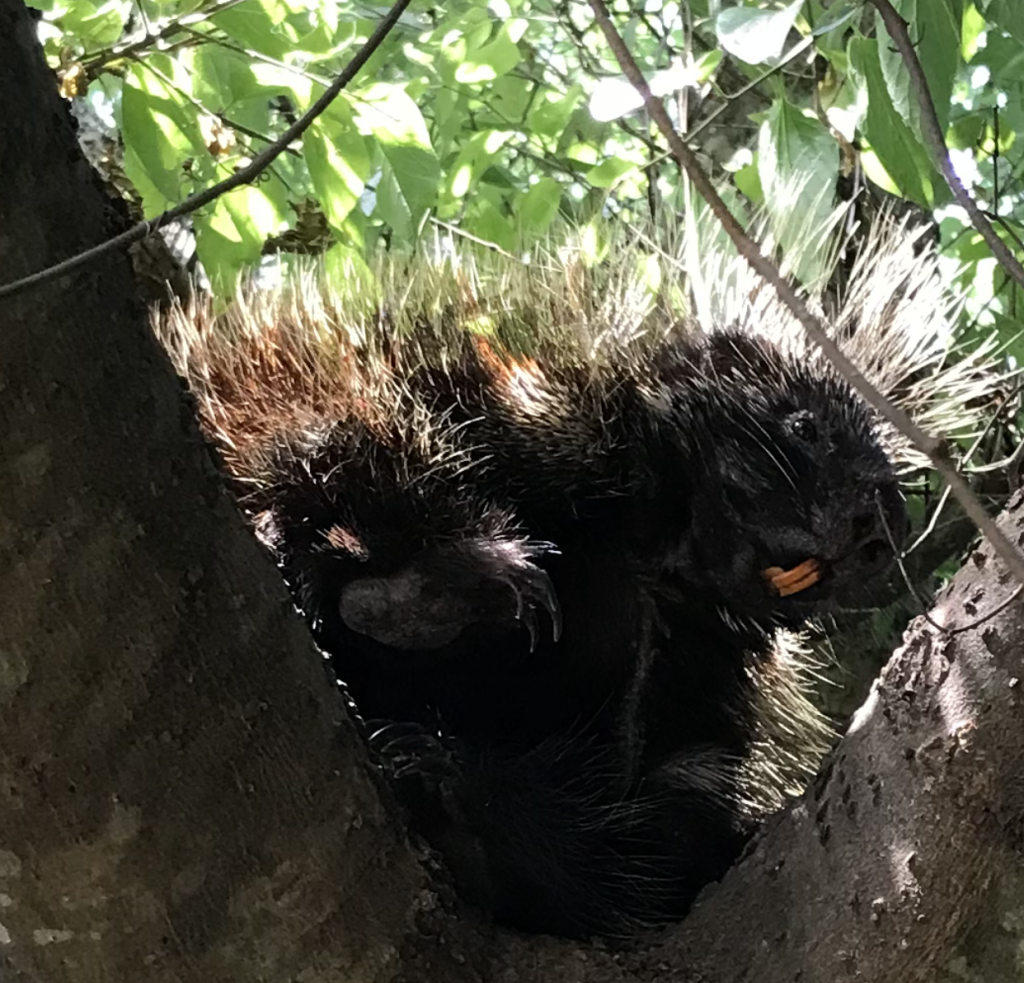Conservation
Porcupines: Living and Learning on Your Land
By David Touchon
What are these strange creatures that are feeding on my trees? I did not know that we had porcupines in Kendall County. Well, they live among us in a very secretive manner. It is critical for landowners to understand the multilayered feat of managing land, especially in the Hill Country. Land Management is a full-time commitment, and proper regular maintenance requires owners to know every inch of their property. This includes the many invited and uninvited visitors you will find from time to time-like porcupines.
The North American Porcupine (Erethizon dorsatum) has many family members. Still, the primary difference in the North American variety is shorter quills, compact heads, and small to medium size ranges. These strict herbivores are nocturnal when they locate delicious food items, mainly TREES! Much like the beaver, the porcupine desires the cambium layer of a living tree where the tree’s vascularity is situated. Porcupines are expert tree climbers who can eat the entire vertical height of the tree until the limb load can no longer support their weight. Feeding or “Girdling” the complete circumference of a tree can lead to the tree’s death.

Tree maintenance is essential, so survey your property and look for the trees that have been fed upon. You can spot a feeding tree from the gnawed patches of the bark and an abundance of elongated pellets below the tree. Plastic tree guards work well since the porcupine cannot get a grip on the smooth, hard plastic. Chicken wire works well to prevent feeding, but firsthand experience tells us that the porcupine can climb past the chicken wire and resume feeding operations. If you come across trees that have been fed upon, you can easily track a porcupine to the most giant and dense tree in the immediate area; most often, they will sleep soundly with a full belly. The occasional porcupine at the Cibolo Nature Center or Herff Farm enjoys the Gum Bumelia (Bumelia lanuginosa) and Monterry Oak (Quercus turbinata), so we always check those trees often during spring and summer.

Porcupines within the urban interface can also cause some concerns for our dogs, but here are some tips to help avoid a costly trip to the veterinarian. Porcupines are nocturnal, so your dog could cross their path in the depth of night or early morning since all dogs want to go out around 4:30 in the morning. A porcupine on the ground is easily steered with a broom or stick. They do not like to be bothered, so being annoying (without hurting them) will make them move to happier feeding areas.
Porcupines can cause some economic loss in the form of expensive tree loss and veterinarian bills. Be vigilant when looking at your property. Look for gnawing and or an unusual accumulation of leaves at irregular times of the year. Porcupines are quiet by nature but will always travel to higher ground when in doubt—contact your local wildlife removal experts for help. Remember that proper land management is being familiar with every corner of your property. Make sure you have a land management plan and attend to the land regularly.
